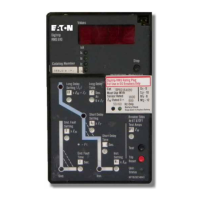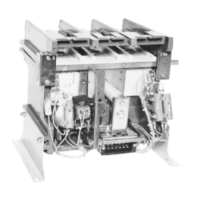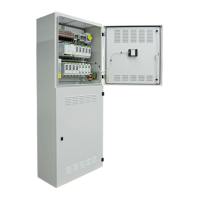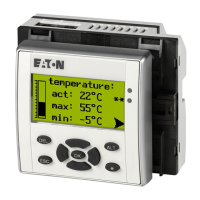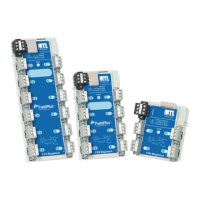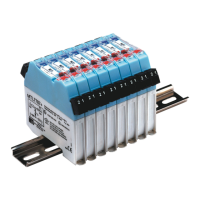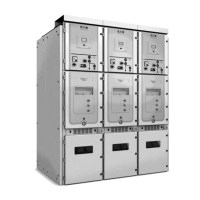Page
5
Lefl
Contact
Base
Right
Contact
Base
Fig.
7
Left
-
and Right
-
Pole Contact Bases
Circuit Latch
Breaker
Handle
Side Trip Side
Plate Unit Plate
Retaining
Screws
Position trip unit in base. Make sure latch bracket pin is
properly seated in slots in side plates (see Fig. 8). If
necessary, move latch toward load end of circuit breaker
to seat trip unit.
Screw in and tighten three trip unit retaining screws
(centerfirst).Torque to 12 Ib
-
ft (16.27 N.m) (see Fig. 8).
A
A
CAUTION
DO NOT EXCEED ATORQUE OF 12 LB-FT
(16.27 N.m). EXCESSIVE TORQUING WILL SHEAR
SCREWS.
FAILURETO APPLYTHE REQUIREDTORQUE MAY
LEADTO EXCESSIVE HEATING AND CAUSE
NUISANCE TRIPPING OF THE CIRCUIT BREAKER.
For an MDL
-
frame, also screw in and torque the load end
screws to 6
-
8 Ib
-
ft. (8.14
-
10.85 N.m.).
3.4 3
-
Pole (Non
-
Ground Fault) Trip Unit Installation
Remove trip unit outer pole screws and red plastic
washers from the breaker frame. Discard red plastic
washers (fig. 7). For the MDL
-
frame, also remove the load
end trip unit mounting screws from the frame
(fig.
7a).
Note: The two
trip
unit
outer retaining screws may be
placed
in
the trip
unit
conductor holes at
this
time. If
preferred, the 5/16 inch hexagonal
-
head wrench may
be used
to
position the screws when the
trip
unit
is
in
the base.
Position trip unit in base. Make sure latch bracket pin is
properly seated in slots in side plates (see Fig. 8). If
necessary, move latch toward load end of circuit breaker
to seat trip unit.
Screw in and tighten three trip unit retaining screws
(centerfirst).Torque to 12 Ib
-
ft (16.27 N.m) (see Fig. 8).
A
CAUTION
Fig.
8
Trip Unit Installed in Circuit Breaker
Note: The two
trip
unit
outer retaining screws may be
placed
in
the trip
unit
conductor holes at
this
time. If
preferred, the 5/16 inch hexagonal
-
head wrench may
be used
to
position the screws when the
trip
unit
is
in
the base.
DO NOT EXCEED ATORQUE OF 12 LB-FT
(16.27 n.M). EXCESSIVE TORQUING WILL SHEAR
SCREWS.
FAILURETO APPLYTHE REQUIRED TORQUE MAY
LEADTO EXCESSIVE HEATING AND CAUSE
NUISANCE TRIPPING OF THE CIRCUIT BREAKER.
Effective March 2003
EAVN
I.L. 29C615E
Courtesy of NationalSwitchgear.com
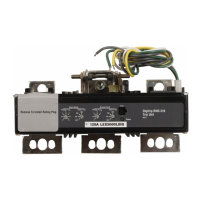
